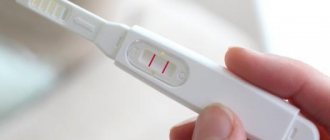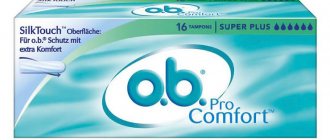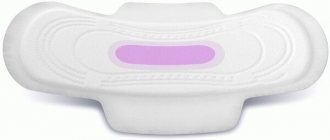An unusual, reusable replacement for tampons and pads during your period is the menstrual cup. The hygienic cup is selected according to the size of the vagina, taking into account the length and width of the mouth guard, as well as its capacity. Despite all the advantages of using a menstrual cap, there are also disadvantages.
Menstrual cup - a replacement for tampons and pads on menstrual days
How to insert a menstrual cup?
The menstrual cup is inserted into the vagina to collect menstrual fluid. When inserting the cup, you must:
- Wash your hands thoroughly. If necessary, apply a water-based lubricant to the cup and vagina.
- Sit or stand in a comfortable position with your legs wide apart, or place one foot on the toilet.
- Fold the bowl (see below for details on how to fold the bowl)
- Take the cup so that the rim is at the top and the tail is at the bottom, and insert it into the vagina.
Read other answers / Add to answer | Ask a new question »
How to choose a size?
Manufacturers produce products in three versions: S, M, L. Some lines of hygiene products are equipped with mouthguards of XL diameter. When choosing the size of a menstrual cup, you need to pay attention to the following factors:
- Age. For girls under 30 years old, caps of small and medium diameter are suitable, and after 30, due to weakening of the vaginal muscles, the minimum possible size is M.
- Presence of childbirth. Women who have given birth are recommended to use cups of larger diameter. This also applies to those who have undergone a caesarean section.
- Number of allocations. If there is little blood during the cycle, then size S or M is enough. For heavy periods, it is better to take a capacious mouthguard that will definitely not leak at the wrong time.
The second parameter taken into account when choosing a menstrual cup is the length of the product. To determine it, you need to measure the height of the cervix. To do this, wash your hands thoroughly and insert your index finger into the vagina until you feel an elastic, round formation with a depression in the middle. You should mark the point where your finger went deep and measure the distance with a ruler.
The relationship between the genital organs changes depending on the day of the cycle, so for maximum accuracy, measurements are taken 1-2 days before the start of menstruation.
Caps that are a couple of millimeters shorter than or equal to the measured distance will be convenient. If there is heavy discharge, you can take a larger silicone menstrual cup, since the vaginal vaults stretch and there will be no discomfort.
How do I know if the menstrual cup is inserted correctly?
There are several clear signs that your menstrual cup is not inserted correctly, and the main sign is leakage. If the cup is leaking, it is likely that it was not inserted correctly, and you may need to repeat the cup insertion process several times before you understand how it works.
Another sign of an incorrectly inserted menstrual cup is discomfort. If you feel something cutting into your vagina or that the cup is not deep enough into your vagina, you may have inserted the cup incorrectly. Inserting the cup correctly takes some practice, but you'll know you've mastered the skill when the cup doesn't leak and you can't even feel it inside. Read other answers / Add to answer | Ask a new question »
Will the menstrual cup interfere with my use?
Devoted users of menstrual cups note that they are not felt at all when worn, which is one of the most significant advantages of menstrual cups. As long as you insert the cup correctly, you can forget you're using it at all (except when you need to empty the cup). The cup should not cause any pain or discomfort and should provide you complete freedom from discomfort during menstruation. Read other answers \ Add answer | Ask a new question »
What is the best position when inserting a menstrual cup?
Different women prefer different techniques for inserting a menstrual cup. However, in our research, we have found that for the optimal position for inserting the cup, it is best to place your foot on the edge of the toilet or bathtub, this position is most comfortable for inserting the cup into the vagina. Read other answers / Add to answer | Ask a new question »
Pros and cons of a menstrual cap
The menstrual hygiene cup has several important differences from conventional tampons and pads. Some of these characteristics are advantages of the product, others can become serious disadvantages.
The advantages of a menstrual cap include the following:
- Health care: unlike tampons, a mouthguard maintains the natural state of female reproductive microflora and prevents the development of inflammatory diseases of the reproductive system that occur due to dysbiosis.
- Harmlessness: the menstrual cup is made of hypoallergenic materials and does not contain bleaches, fragrances or other harmful additives. Its use does not dry out the vagina and does not cause toxic shock syndrome.
- Hygienic: when using menstrual cups, the liquid is separated from the vaginal walls, so the unpleasant odor is almost invisible. In addition, the product is very easy to clean and sterilize.
- Ease of use: the vaginal tray must be emptied every 6-12 hours, depending on the intensity of the discharge. Due to the absence of leaks, it can be used when playing sports, swimming, while traveling and sleeping.
- Savings: reusable use of the product pays off the high initial cost after 8-10 months of use. Avoiding spending on pads and tampons will save about 2,000 thousand rubles a year.
- Caring for the environment: The production of tampons and pads, as well as their subsequent disposal, pollute the environment. Unlike these hygiene products, mouth guards last for many years, reducing landfill waste.
The possibility of reusable use allows you to save on hygiene products
The disadvantages of the hygiene product include the following:
- Difficult to use: Learning to use the bowl correctly requires practice and patience. At first, it may slip out of your hands during insertion and removal from the vagina. To avoid inconvenience, remove the cap in the shower.
- Possible inconveniences: due to incorrect insertion, inappropriate size or anatomical features, the presence of the cup in the vagina may disturb the woman.
- Need for care: in order for the mouth guard to be sterile and not harm the vaginal microflora, it must be thoroughly washed, sterilized once a month and stored in special conditions.
The benefits of menstrual caps outweigh the minor disadvantages.
I insert a menstrual cup, and the tail sticks out of the vagina, what should I do?
In some cases, the tail of the menstrual cup may stick out from the vagina. This can happen because the tail is too long (in which case it can be trimmed), the cup is too long, or is not inserted deep enough into the vagina. The best strategy for this problem is to trim the tail or reinsert the cup to make sure it is deep enough. Read other answers / Add to answer | Ask a new question »
Can lubricant be used to ease the insertion of a menstrual cup?
Yes, you can use lubricant to help with cup insertion, but you should only use non-toxic, water-based lubricants approved for use with intimate care products (something like KY-Jelly). Do not use vegetable oils or any other unnatural lubricants as this may damage the menstrual cup and put you at risk of various vaginal infections. Read other answers / Add to answer | Ask a new question »
I find it difficult to master the technology of inserting a menstrual cup, is this normal for beginners?
Yes. It is a completely common and normal situation when a new user of menstrual cups experiences problems inserting the cup. This process requires some skill, which is often mentioned in menstrual cup reviews and FAQs. It is important that you understand that everything is surmountable, you just need a little patience and practice. Read other answers / Add to answer | Ask a new question »
Advantages and disadvantages in comparison with other hygiene products
Menstrual cups have many good and useful qualities that other hygiene products do not have:
- ordinary tampons worsen the condition of the microflora of the female vagina, since they absorb not only menstrual flow, but also natural lubrication, and a mouthguard, in its time, does not harm the mucous membrane;
- the cups cope with even the heaviest periods;
- You can use a menstrual cup for several years, which really helps save a lot of money from your budget;
- there is no need to change this device very often, as it is designed for a larger amount of fluid released than conventional pads and tampons;
- When using a mouth guard, you should not be afraid that your female organs will be exposed to various fungal diseases and allergic reactions;
- it does not contain bleaching agents, absorbents or deodorizing substances;
- It is very convenient to use this hygiene method during a wide variety of vigorous activities. This product is made of a very elastic material, which does not provide its owner with the slightest discomfort when performing various “complex” movements. Its most important advantage is that it qualitatively protects it from possible leakage.
Existing disadvantages present when using this silicone device:
- a small amount of medical research and lack of recognition in the world. Although mouthguards were invented more than a hundred years ago, unfortunately, they are much less common than the well-known tampons and pads;
- stagnation of bloody discharge inside a woman. Due to the vacuum space and the inability of oxygen to penetrate into the vaginal cavity, aerobic bacteria develop. But infection can also occur using other hygiene methods. To avoid the proliferation of infectious diseases in the body, try to carefully monitor your intimate hygiene;
- instructions for using a menstrual cup are subject to any woman;
- release of blood back into the uterine cavity. This happens because the structure of the cup allows blood to move freely through it. This most often occurs while sleeping or performing sports movements. It is known that the uterus opens at the moment of regulation, and the entry of menstrual blood into it provokes the development of endometriosis and other inflammatory processes;
- It is not recommended to use menstrual cups for girls who have not yet undergone hymen rupture, women with IUDs that prevent pregnancy, and those who have any diseases of gynecological origin.
Of course, before you start using a silicone cup, you need to consult a qualified gynecologist and undergo the necessary medical examination. If, after examining your body, the doctor allows you to use a mouth guard, carefully understand the rules for its use.
It feels like the cup is about to fall out, what should I do?
If you feel like your menstrual cup is not securely attached and is about to fall out, ask yourself this. Have you inserted the cup deep enough into your vagina? Perhaps you bought the wrong size bowl? Do you have a short cervix and use a long cup?
You can try inserting the cup again to make sure it is inserted deep enough and also opened correctly (this may solve the problem immediately). If you have actually inserted the cup correctly, then you need to determine whether you have chosen the right size, and if you made a mistake, buy a new cup of the correct size or another shape that better suits the requirements of your body. Read other answers / Add to answer | Ask a new question »
How to remove the bowl
It is necessary to remove the mouth guard from the vagina by the tail. However, there are some nuances. If you simply pull it, the bowl will stay in place. You will get the impression that it is much easier to insert it than to remove it. How to remove the cup? There is one trick.
- Before the procedure, you should wash your hands with soap.
- Feel the base of the cup and press it slightly with your fingers. This action will break the seal of the cup and it will stretch out freely.
- This should be done over the toilet, as blood may spill.
- The disposable menstrual tray is thrown away along with its contents. Then you should insert another one. The reusable cup needs to be cleaned of any secretions, washed under running water, then with warm water and soap. Dry a little. Can be used.
The bowl can be used for 10 years. After the end of menstruation, the product must be boiled for about 15 minutes in water. Place in a bag that allows air to pass through. As a rule, this is sold together with the bowl. Before using it again, you need to wash it with soap. Using this hygiene product is actually very simple. The main task is to choose the right menstrual cap. By the way, pharmacy representatives or website managers can help with this. When purchasing online, they even agree to exchange it if the product is not the right size.
What is the best way to trim the tail of a menstrual cup?
The tail of the menstrual cup can always be trimmed for greater convenience. However, if you cut the tail carelessly, you risk damaging the bowl itself.
It is best to cut the ponytail in sections so as not to accidentally shorten it too much with one wrong move of the scissors. This way you won't damage the bowl and can trim the tail to the ideal length. Read other answers / Add to answer | Ask a new question »
I don't feel comfortable walking around with a menstrual cup, what am I doing wrong?
If you have read about the main causes of discomfort when using a menstrual cup (wrong size, incorrect insertion, cup too hard, etc.), then you can attribute this discomfort to the manufacturer of the menstrual cup. In this case, you need to choose a different menstrual cup model to have a positive experience.
But think about what exactly caused the discomfort, for example, the bowl was too soft or hard, or an issue with the diameter, length, texture, shape of the tail or bowl. This will help you choose a bowl that you feel more comfortable with next time. Read other answers / Add to answer | Ask a new question »
Product characteristics
A menstrual cup (cap) is a dome-shaped container for collecting discharge from the uterus during menstruation. It consists of a rim, a body where blood flows, and a tail for comfortable removal. There are 2 types: soft disposable (rarely used), reusable.
In the manufacture of menstrual cups, 3 types of raw materials are used:
- Medical silicone. The most common material that is safe for humans has different degrees of hardness.
- Elastothermoplastic. Used less frequently, it is denser and also causes allergic reactions.
- Natural rubber. There are only 2-3 models made of this material, since they are impractical and prohibited for girls with latex allergies.
To reduce the negative consequences of the menstrual cup - leakage and displacement of the product - it is reinforced with a second rim, which increases the strength of the fixation. Sometimes the manufacturer applies measuring marks on the outer surface so that a woman can find out the amount of discharge during her period.
I have long nails, is it safe for me to use a menstrual cup?
Long nails and a menstrual cup are quite compatible. You must be careful not to scratch yourself as you insert the cup, but patience and persistence will guide you through the process.
It is also important for health and hygiene to wash your hands and under your fingernails to ensure that they do not introduce bacteria into the vagina, which can cause infections, irritation and discomfort. Read other answers / Add to answer | Ask a new question »
- About
- Latest Posts
admin
Latest posts by admin (see all)
- FLUX ® menstrual panties (period panties) | Full review - June 20, 2020
We'd love to hear your opinion
Care and cleaning of the menstrual cup
During menstrual periods, standard washing of the product after removal from the vagina is sufficient. It is better to use cold water so that ingrained blood stains do not remain on the mouth guard.
After the end of the cycle, the menstrual cup is sterilized. It is cleaned using detergents and boiled for 3–5 minutes. This is necessary to prevent the proliferation of pathogenic bacteria that cause inflammation of the genital tract the next time it is used. A clean and dry menstrual cap is placed in a bag sold as a set and stored until the next cycle.











